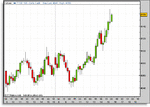2George
Active member
- Messages
- 144
- Likes
- 10
Set Trap Trendlines are those that are drawn using the body of a candle and not the spike.
Spikes are useless when it comes to assessing a trend.
So, if you use the open price of a bull candle and draw a set trap trendline under it, then this is the correct place to start the support trendline.
If you draw a set trap over the body of a bear candle, the open price, then this is a resistance set trap trendline.
Set Trap Trendlines are key to safe trading.
Regards
George
Spikes are useless when it comes to assessing a trend.
So, if you use the open price of a bull candle and draw a set trap trendline under it, then this is the correct place to start the support trendline.
If you draw a set trap over the body of a bear candle, the open price, then this is a resistance set trap trendline.
Set Trap Trendlines are key to safe trading.
Regards
George



